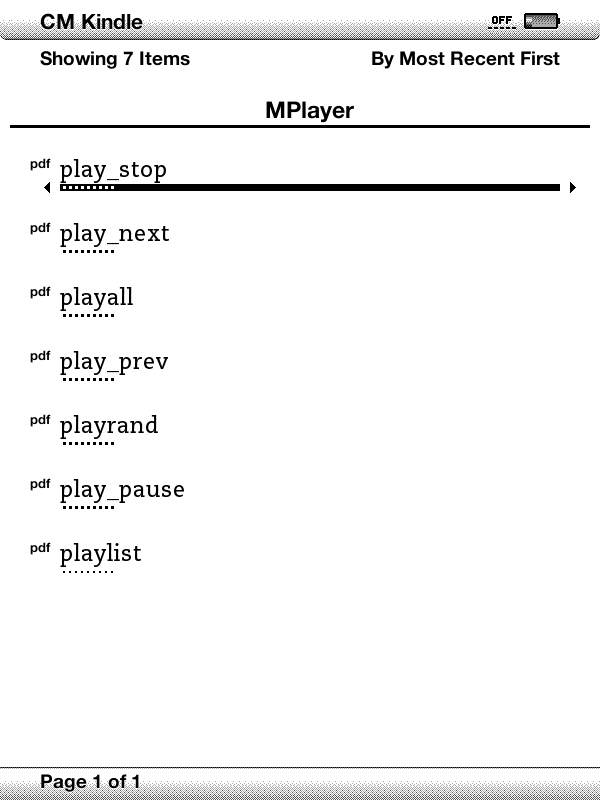Linux Application Launcher for Kindle
Posted by sky | Tags: Linux , Personal , Technology , hacking , installation , kindle , testing
Kite launcher allows you to run native linux applications on kindle 3. (see the Kindle Hacks Information page)- from the home screen like kindlets
- when your kindle is unplugged from the usb port
- when your kindle starts up
Download the Kite.zip from the forum, and unzip it. There are 6 install.bin files to choose from depending on your Kindle model and version.
The bin file with k3w is for the wifi only model.
The bin file with k3g is for the 3g model, and the one with k3gb is for the international model (UK).
If your Kindle version is 3.2 and above, then use the bin file with -3.2.1_install.bin in the filename.
My Kindle is 3.3 wifi model, so I choose to copy update_kite_k3w-3.2.1_install.bin to my Kindle drive.
Under your Kindle Settings page, press Menu button, then select "Update Your Kindle". (The steps are similar to installing Duokan)
After the Kite daemon runs on Kindle bootup, it will draw a kite on the default Kindle boot screen and inform the user that Kite is enabled.
On your Kindle drive (connect to your computer), you will see a kite folder, and within it, there are 2 subfolders: onboot and ondrop.
If you copy files (executables) over to the kite folder, those files will show up in the Kindle home screen as Pdf files.
You can then run the application in the same way as opening the ebook.
Presumably, files within the onboot folder will be executed on Kindle bootup, and files within the ondrop folder will be executed when you disconnect the usb cable.
I will show how to configure the MPlayer script and launch them with the Kite launcher.
Download the MPlayer (audio player) from the mobileread forum and unzip it (mplayer-0.2.0.zip). There are 2 folders: mplayer and launchpad.
Copy the mplayer folder over to your Kindle drive.
Inside the launchpad folder, there is a file mplayer.ini which is to be used for launchpad. (another Linux Application Launcher, the forum has more info on launchpad)
Basically, the mplayer.ini shows what are the script to be run for each of the supported action.
I will convert each of the script action to a separate script file.
What follows are the filename of each script file and the contents in the script file.
playlist
#!/bin/sh /mnt/us/mplayer/control.sh playlist
playall
#!/bin/sh /mnt/us/mplayer/control.sh playall
playrand
#!/bin/sh /mnt/us/mplayer/control.sh playrand
play_next
#!/bin/sh /mnt/us/mplayer/control.sh next
play_prev
#!/bin/sh /mnt/us/mplayer/control.sh prev
play_pause
#!/bin/sh /mnt/us/mplayer/control.sh pause
play_stop
#!/bin/sh /mnt/us/mplayer/control.sh stop
Copy all the 7 script files over to the Kindle kite folder, and they will appear in your Kindle home screen.
For ease of use, I create a Kindle collection call MPlayer, and add all of the 7 script files to MPlayer.
So, for example, to play all your music files, select the playall and launch it.
Behind the scene, the Kite daemon will run the playall script, which will run /mnt/us/mplayer/control.sh playall (a script in the mplayer folder). The Kindle drive (when the Kindle is connected to your computer) is mounted in the path /mnt/us in the Kindle OS.
Behind the scene, the Kite daemon actually creates a blank Pdf file for each of the file that is inside your kite folder.
For eg., the playall.pdf is created in the documents folder for the playall script in the kite folder.
So, when you launch the playall.pdf, the Kite daemon knows this, and will then launch the actual playall script.
 Previous Post
Next Post
Previous Post
Next Post